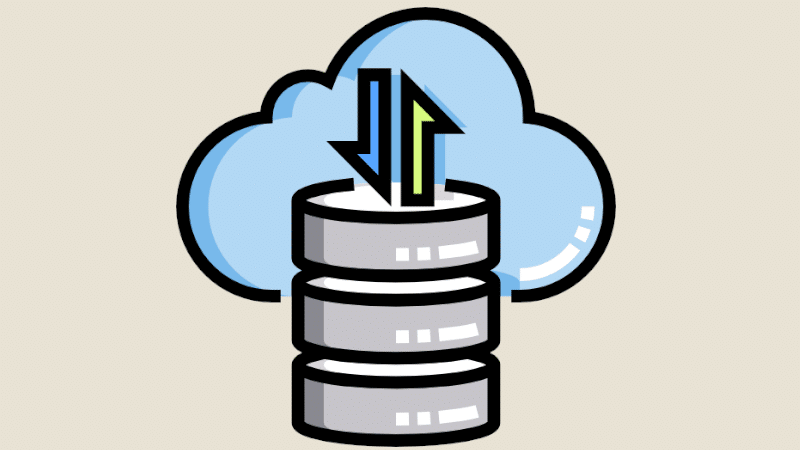To make data intelligible and understandable, organisations use a multitude of tools. But as data has evolved over the years, so have these technologies. That's why today we talk about a modern data stack.
So what is it all about? How does it differ from the old model? What are the advantages of the Modern Data Stack? Find out all the answers to your questions.
What is modern stack data?
A modern data stack (MDS) is made up of specific tools used to make the most of data. These different technologies enable information to be collected from different data sources, organised, stored, transformed and analysed.
The term “modern data stack” is used because the solutions used today are radically different from those used in the past.
What is the difference between the modern data stack and the legacy data stack?
While data stacks have been around since the data explosion and the need to make effective use of the information available, these sets of tools have evolved considerably over time. The first models met certain objectives, which are not necessarily the same today. These correspond to the legacy data stack. So what are the differences with the modern data stack?
Integrating new tools
As data volumes increase, so do storage space requirements. This is why new technologies are emerging to meet the growing demand from businesses. The idea is to find more efficient ways of processing data.
This is particularly true of cloud technology, which has radically changed Big Data. As a result, cloud data warehouses are developing within companies, which can store their data according to their needs. Similarly, data lakes have evolved to facilitate the optimisation and transformation of data.
Beyond data transformation, BI, analytics and data visualisation tools are also developing to meet the challenges facing organisations.
The use of these new technologies is giving rise to the modern data stack as we know it today.

A new data transformation process
The use of more powerful tools also means that the data transformation process can be modified.
Traditionally, the ETL (extract, transform, load) process was used. The idea was to clean up the data just after it had been collected, so as to select only the information that was useful and relevant at a given point in time.
This was necessary because of limited data storage space. This model encouraged the preparation of data for analysis. But it also required a heavy infrastructure.
From now on, the ELT process will prevail. This means that all data is loaded into the storage space. This gives the organisation access to large quantities of available information. With more comprehensive data analysis, organisations are able to make more relevant decisions.
A new use for data
As well as a change in processes and tools, the modern data stack also represents a paradigm shift. Organisations are moving from a vision centred on technology to one centred on business. This data-driven way of thinking means that data can deliver even more value.
Here’s a summary of the differences between these two data stack models:
| Legacy Data Stack | Modern Data Stack |
|---|---|
|
|
Good to know: even if the modern data stack prevails, companies are still using their legacy data stack. Before the advent of these new technologies, most organisations had invested massive sums in heavy and complex infrastructures. Transferring all the data to a more modern model therefore seems like a waste of time and money.
The best solution is to work with both ‘traditional’ and more modern technologies. Modern Data Stack and legacy Data Stack often coexist within companies.
What are the advantages of a modern data stack?
Compared with its predecessors, modern stack data offers a host of advantages.
Modularity
Each new tool is designed as a stand-alone component, but one that can be integrated. In this way, the modern data stack integrates its solutions layer by layer. Each works independently, but integrates seamlessly with the other technologies in the data stack. The organisation can use different software packages with ease.
This modularity means that the data silos often found with legacy data stacks can be reduced.
Speed
The modern data stack is cloud-based. As a result, organisations benefit from optimum data processing speed. Whereas it used to take several hours to complete a job with the legacy data stack, the same task now takes just a few minutes.
In addition to the cloud, this speed of execution in data transformation is also made possible by all the automated functions offered by the most modern tools.

Cost
As the infrastructure is much simpler than with a traditional data stack, modern stack data enables organisations to reduce costs considerably. And all the while optimising data processing performance. So costs are doubly reduced.
Ease of deployment
Modern data stacks are designed to be easier to use by different employees. It is no longer necessarily necessary to master complex programming languages to process and use data. The idea is to make it accessible to everyone (not just Data Engineers or Data Scientists) to enhance its value.
Evolutionary
As it is possible to integrate new technologies independently of each other, companies have the opportunity to continually improve their data stack. In doing so, they are able to meet their current needs, however they evolve.
This is particularly the case for the new security standards in force (GDPR, cyber attacks, etc.). Legacy data stacks are not capable of integrating new functionalities to meet these requirements. Companies must therefore integrate modern solutions to comply with the law.
Between improving performance, reducing costs and complying with the law, modern stack data is becoming a necessity for businesses.
Key facts:
- Modern stack data brings together the tools and technologies that are essential for data processing and analysis.
- These MDS differ from legacy stack data in the tools they use and the processes they implement.
- They enable organisations to cut costs and work faster and more efficiently, while adapting to changes in the market.










